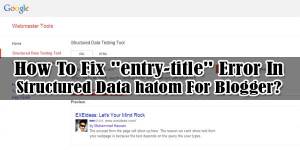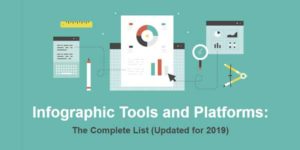
When crafting content for the web, understanding heading hierarchy isn’t just about formatting – it’s about creating a roadmap for both search engines and human readers. The strategic use of HTML headings (H1 through H6) forms the backbone of effective SEO and content structure. Let’s explore how to optimize these crucial elements for maximum visibility and user engagement.
“Headings are signposts that guide readers through your content. Properly structured headings create a content hierarchy that search engines use to understand your page’s relevance to specific queries.” – SEO Best Practices
Table of Contents
The Fundamental Role Of Headings In SEO
Search engines have evolved tremendously, but one constant remains: they rely on heading tags to comprehend content structure and relevance. Think of headings as the chapter titles in a book – they tell both readers and search engines what to expect in each section.
Why Heading Structure Matters
- Content Organization: Headings break your content into digestible sections
- User Experience: Proper headings help readers scan and find information quickly
- SEO Signals: Search engines use headings to determine topic relevance and keyword focus
- Accessibility: Screen readers rely on headings to navigate content
Understanding Heading Hierarchy: H1 To H6
The HTML heading structure follows a strict hierarchy from H1 (most important) to H6 (least important). This hierarchy creates a content outline that benefits both human readers and search engine crawlers.
The H1 Tag: Your Page’s Primary Identifier
Consider your H1 as the title of your content masterpiece. Best practices include:
- Use exactly one H1 per page (with rare exceptions)
- Include your primary keyword naturally
- Keep it under 60 characters for optimal display
- Make it compelling enough to encourage reading
For example, on our ExeIdeas blog, each post features a single, descriptive H1 that clearly states the article’s focus.
H2 Tags: Your Content’s Main Pillars
H2 headings serve as the main sections of your content. They should:
- Support and expand upon your H1 topic
- Be used 2-6 times per page (varies by content length)
- Include secondary keywords where relevant
- Follow a logical progression of ideas
H3 To H6 Tags: The Supporting Structure
As we move down the heading hierarchy, these tags serve increasingly specific purposes:
- H3: Sub-sections of your H2 content (typically 3-8 per page)
- H4: Further divisions of H3 sections (used sparingly)
- H5-H6: Rarely needed, only for extremely detailed content
Optimal Number Of Headings For SEO
While there’s no absolute rule, these guidelines will keep your content well-structured:
Standard Blog Post (1000-1500 Words)
- 1 H1 (title)
- 3-5 H2 headings
- 5-10 H3 headings
- 0-3 H4 headings
- H5-H6: Generally unnecessary
Comprehensive Guide (2000+ Words)
- 1 H1
- 5-8 H2 headings
- 10-20 H3 headings
- 5-10 H4 headings
- H5-H6: Only if dealing with complex subtopics
Common Heading Mistakes That Hurt SEO
Even experienced content creators sometimes stumble with heading implementation. Here are pitfalls to avoid:
Heading Stuffing And Keyword Overuse
Search engines can detect when headings are unnaturally packed with keywords. Instead of “Best SEO Services | Affordable SEO Services | Top-Rated SEO Company,” opt for natural, reader-friendly headings.
Skipping Heading Levels
Never jump from H1 to H3 or H2 to H4. This disrupts the content hierarchy and confuses search engines. Always follow the logical progression: H1 → H2 → H3 → H4, etc.
Using Headings For Styling Only
Headings shouldn’t be used merely to make text bigger or bolder. If you need stylistic changes, use CSS classes instead of heading tags.
Advanced Heading Strategies For SEO
Beyond basic implementation, these techniques can give your content an SEO edge:
Semantic Heading Relationships
Ensure each subheading naturally follows from its parent heading. For instance, an H2 about “Content Creation Tools” might have H3s for “Graphic Design Tools,” “Video Editing Software,” and “AI Writing Assistants.”
Question-Based Headings For Voice Search
With voice search growing, consider including question-formatted headings like “How Many H2 Headings Should I Use?” These match natural language queries.
Heading Length Optimization
Keep headings concise but descriptive. Ideal lengths are:
- H1: 50-60 characters
- H2: 50-70 characters
- H3-H6: Under 100 characters

Tools To Analyze And Optimize Your Headings
Several tools can help audit your heading structure:
SEO Browser Extensions
Plugins like SEO Minion or MozBar let you quickly view heading structures on any webpage, including your own content on ExeIdeas.
Content Analysis Tools
Platforms like SEMrush, Ahrefs, and SurferSEO provide detailed heading analysis and optimization suggestions.
Accessibility Checkers
Tools such as WAVE can identify heading hierarchy issues that might affect users with disabilities.
Heading Best Practices Across Content Types
Different content formats may require adjusted heading approaches:
E-Commerce Product Pages
Focus on clear, benefit-driven H2s like “Key Features,” “Technical Specifications,” and “Customer Reviews.”
Service Pages
Structure with H2s addressing “Our Process,” “Benefits,” and “Case Studies.”
Blog Posts
Use more conversational H2s that reflect natural reading progression, as seen in our ExeIdeas blog collection.
Measuring The Impact Of Your Heading Strategy
To validate your heading approach, track these metrics:
- Organic traffic growth
- Keyword ranking improvements
- Reduced bounce rates
- Increased time on page
- Featured snippet acquisitions
Future-Proofing Your Heading Strategy
As search evolves, keep these emerging considerations in mind:
Structured Data And Headings
Proper heading structure complements schema markup, potentially enhancing rich results.
AI Content Understanding
Search engines are getting better at understanding context beyond just heading keywords.
Mobile-First Heading Considerations
Ensure headings remain effective on smaller screens where content structure is even more crucial.
Conclusion: Headings As Your SEO Foundation
Mastering heading hierarchy isn’t about gaming search algorithms – it’s about creating content that logically organizes information for both humans and machines. By implementing these H1-H6 strategies, you’ll build pages that search engines can easily understand and readers will find genuinely helpful.
Remember that while headings are powerful SEO tools, they work best when supporting high-quality, comprehensive content. For more content optimization insights, explore our complete ExeIdeas blog archive featuring in-depth guides on all aspects of digital marketing and SEO.


















Be the first to write a comment.